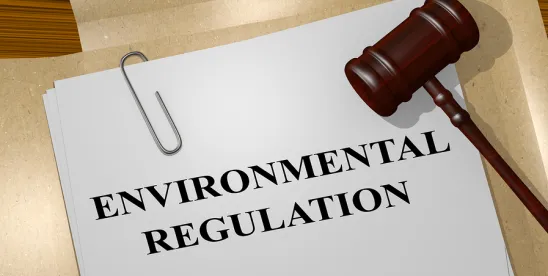On November 12, 2024, a split panel of the D.C. Circuit Court of Appeals declined to address whether the FAA complied with the White House Council on Environmental Quality (CEQ) NEPA regulations because those regulations are ultra vires or beyond CEQ’s legal authority. This holding, which is potentially subject to en banc or Supreme Court review, upends decades of administrative practice—federal agencies and developers alike have been operating within the bounds of the CEQ’s NEPA regulations since the 1970s.
The case, Marin Audubon Society v. Federal Aviation Authority, presented the question of whether the FAA complied with NEPA when it determined that it did not need to prepare an environmental assessment or environmental impact statement in developing a plan that would allow ongoing tourist flights over national parks in the San Francisco Bay Area, subject to additional mitigation measures.
Both the challengers to and the agencies defending this decision “took for granted CEQ’s authority to issue binding NEPA regulations.” The Court, however, declined to answer the question of NEPA compliance because CEQ did not have any valid authority to issue binding regulations. The Court concluded that NEPA did not itself authorize CEQ to issue binding regulations, and further concluded that Executive Order 11,991 did not provide CEQ with such authority because—under separation of powers principles—agencies’ authority must derive from a legislatively-enacted statute.
The D.C. Circuit has, in the past, expressed concerns about the binding effect of the CEQ’s regulations, because NEPA does not provide express rulemaking authority. Without considering the issue in detail, the U.S. Supreme Court has previously observed that “CEQ’s interpretation of NEPA is entitled to substantial deference.” Andrus v. Sierra Club, 442 U.S. 247, 357 (1979). Acknowledging this statement, the D.C. Circuit panel concluded that “we are not bound by every stray remark [by the Supreme Court] on an issue the parties neither raised nor discussed in any meaningful way.”
This holding upends the decades-long practice of federal agencies and developers, and may very well have an immediate impact on another landmark NEPA case, Seven County Infrastructure Coalition v. Eagle County, which is set to be argued before the U.S. Supreme Court on December 10, 2024.
While—like in the Marin Audubon case—the parties in Seven County have not raised the issue of CEQ’s authority to issue regulations, it was raised in amici briefing. As the Marin Audubon decision illustrates, a court may “venture out to decide” (as the chief judge, writing in partial dissent, framed the court’s action) the validity of the law being invoked even where it is not being challenged. The Supreme Court may also seek additional briefing on the issue, given the decision in Marin Audubon.
The Supreme Court in Seven County is expected to determine the proper scope of federal agency review under NEPA—specifically whether NEPA requires an agency to study environmental impacts beyond the proximate effects of the action over which the agency has authority—and in so doing will either help significantly reduce the yearslong NEPA review delays suffered by developers (if it finds that NEPA contemplates a narrower review) or enable project opponents to continue to utilize NEPA to delay critical development projects.
We will be watching closely how the Marin Audubon decision plays out in argument before the Supreme Court, as well as how the D.C. Circuit’s monumental decision impacts the anticipated revisions to NEPA regulations under the new administration in 2025.




 />i
/>i

